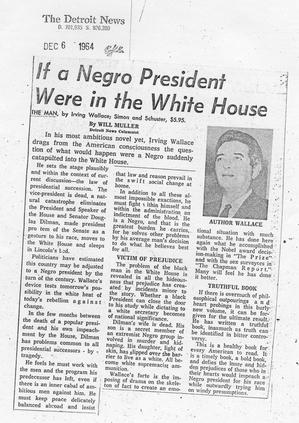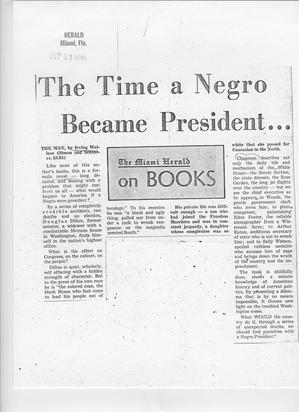Just in time for election season, I’ve begun processing materials related to Irving Wallace’s book The Man (1964), which tells the story of America’s first African American president. Wallace’s protagonist, Douglass Dilman, ascends to the Presidency by accident, as a result of the deaths of the President, Vice President, and Speaker of the House (he is next in the line of succession). Dilman’s presidency is besieged by white supremacists, black political activists, and an attempted assassination. With its controversial premise and page-turning plot,The Man was a major success for Wallace, spending some 40 weeks on the New York Times bestseller list.
As I take my preliminary pass through newspaper reviews of the book, it’s hard not to wince at some of the headlines (see below). To be sure, The Man was something of a cultural moment, and the book’s coverage by the mainstream press poses many questions for students of race and American politics in the Civil Rights era. How, we might ask, was Wallace’s book received by the mainstream press? Was the book’s premise seen as sensational or realistic? And what drove Wallace to write about the first black president?


